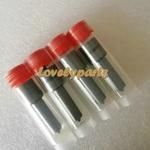Information injection-pump assembly
ZEXEL
101401-4540
1014014540
ISUZU
8970903670
8970903670
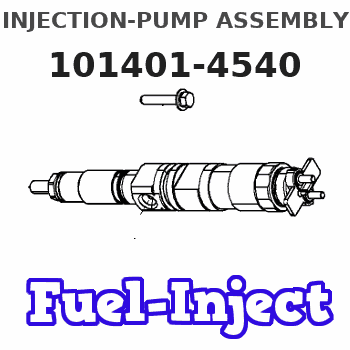
Rating:
Service parts 101401-4540 INJECTION-PUMP ASSEMBLY:
1.
_
6.
COUPLING PLATE
7.
COUPLING PLATE
8.
_
9.
_
11.
Nozzle and Holder
8-97114-015-0
12.
Open Pre:MPa(Kqf/cm2)
18.1{185}
15.
NOZZLE SET
Cross reference number
ZEXEL
101401-4540
1014014540
ISUZU
8970903670
8970903670
Zexel num
Bosch num
Firm num
Name
Calibration Data:
Adjustment conditions
Test oil
1404 Test oil ISO4113 or {SAEJ967d}
1404 Test oil ISO4113 or {SAEJ967d}
Test oil temperature
degC
40
40
45
Nozzle and nozzle holder
105780-8140
Bosch type code
EF8511/9A
Nozzle
105780-0000
Bosch type code
DN12SD12T
Nozzle holder
105780-2080
Bosch type code
EF8511/9
Opening pressure
MPa
17.2
Opening pressure
kgf/cm2
175
Injection pipe
Outer diameter - inner diameter - length (mm) mm 6-2-600
Outer diameter - inner diameter - length (mm) mm 6-2-600
Overflow valve
134424-3920
Overflow valve opening pressure
kPa
127
107
147
Overflow valve opening pressure
kgf/cm2
1.3
1.1
1.5
Tester oil delivery pressure
kPa
157
157
157
Tester oil delivery pressure
kgf/cm2
1.6
1.6
1.6
Direction of rotation (viewed from drive side)
Left L
Left L
Injection timing adjustment
Direction of rotation (viewed from drive side)
Left L
Left L
Injection order
1-3-4-2
Pre-stroke
mm
4.1
4.05
4.15
Rack position
Point A R=A
Point A R=A
Beginning of injection position
Governor side NO.1
Governor side NO.1
Difference between angles 1
Cal 1-3 deg. 90 89.5 90.5
Cal 1-3 deg. 90 89.5 90.5
Difference between angles 2
Cal 1-4 deg. 180 179.5 180.5
Cal 1-4 deg. 180 179.5 180.5
Difference between angles 3
Cyl.1-2 deg. 270 269.5 270.5
Cyl.1-2 deg. 270 269.5 270.5
Injection quantity adjustment
Adjusting point
-
Rack position
12
Pump speed
r/min
960
960
960
Average injection quantity
mm3/st.
60.9
59.3
62.5
Max. variation between cylinders
%
0
-2.5
2.5
Basic
*
Fixing the rack
*
Standard for adjustment of the maximum variation between cylinders
*
Injection quantity adjustment_02
Adjusting point
H
Rack position
9.5+-0.5
Pump speed
r/min
285
285
285
Average injection quantity
mm3/st.
10
8.7
11.3
Max. variation between cylinders
%
0
-10
10
Fixing the rack
*
Standard for adjustment of the maximum variation between cylinders
*
Injection quantity adjustment_03
Adjusting point
A
Rack position
R1(12)
Pump speed
r/min
960
960
960
Average injection quantity
mm3/st.
60.9
59.9
61.9
Basic
*
Fixing the lever
*
Injection quantity adjustment_04
Adjusting point
B
Rack position
R1+0.6
Pump speed
r/min
1600
1600
1600
Average injection quantity
mm3/st.
83.7
79.7
87.7
Fixing the lever
*
Injection quantity adjustment_05
Adjusting point
I
Rack position
-
Pump speed
r/min
150
150
150
Average injection quantity
mm3/st.
79
79
111
Fixing the lever
*
Timer adjustment
Pump speed
r/min
-
Advance angle
deg.
0
0
0
Remarks
Measure speed (beginning of operation).
Measure speed (beginning of operation).
Timer adjustment_02
Pump speed
r/min
-
Advance angle
deg.
5
4.5
5.5
Remarks
Measure the actual speed, stop
Measure the actual speed, stop
Test data Ex:
Governor adjustment
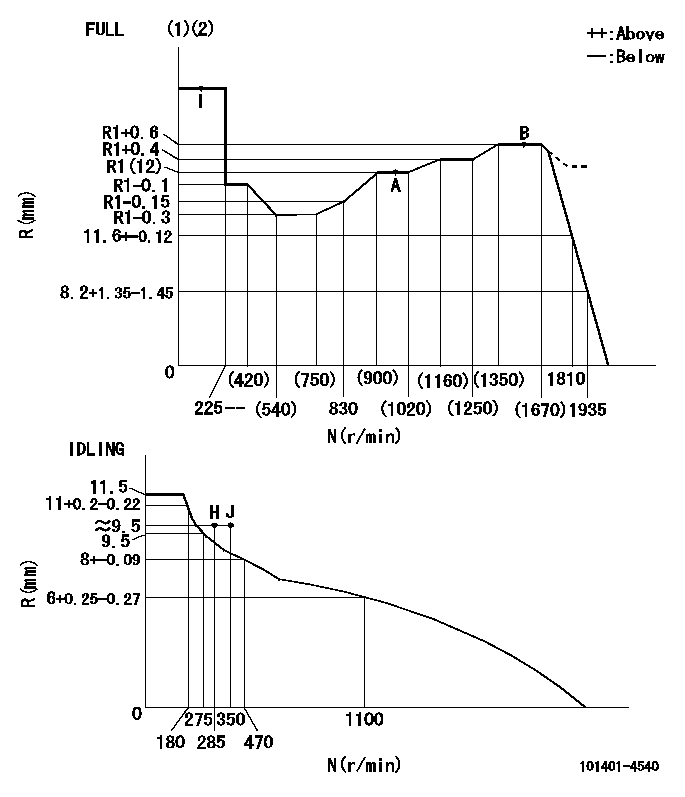
N:Pump speed
R:Rack position (mm)
(1)Torque cam stamping: T1
(2)Tolerance for racks not indicated: +-0.05mm.
----------
T1=G97
----------
----------
T1=G97
----------
Speed control lever angle
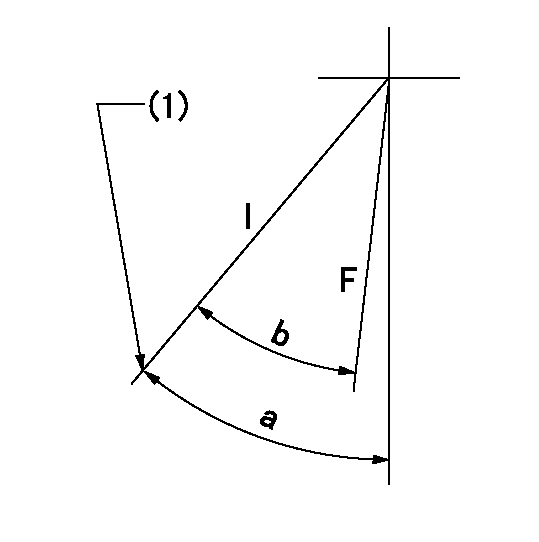
F:Full speed
I:Idle
(1)Stopper bolt set position 'H'
----------
----------
a=43deg+-5deg b=37deg+-3deg
----------
----------
a=43deg+-5deg b=37deg+-3deg
Stop lever angle
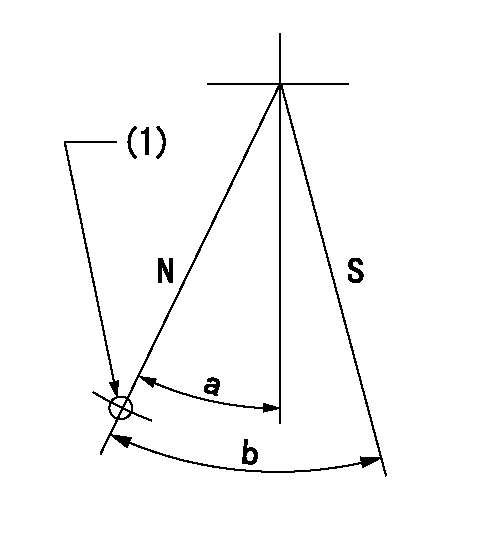
N:Pump normal
S:Stop the pump.
(1)Use the hole at R = aa
----------
aa=64mm
----------
a=20deg+-5deg b=29deg+-5deg
----------
aa=64mm
----------
a=20deg+-5deg b=29deg+-5deg
0000001501 FICD
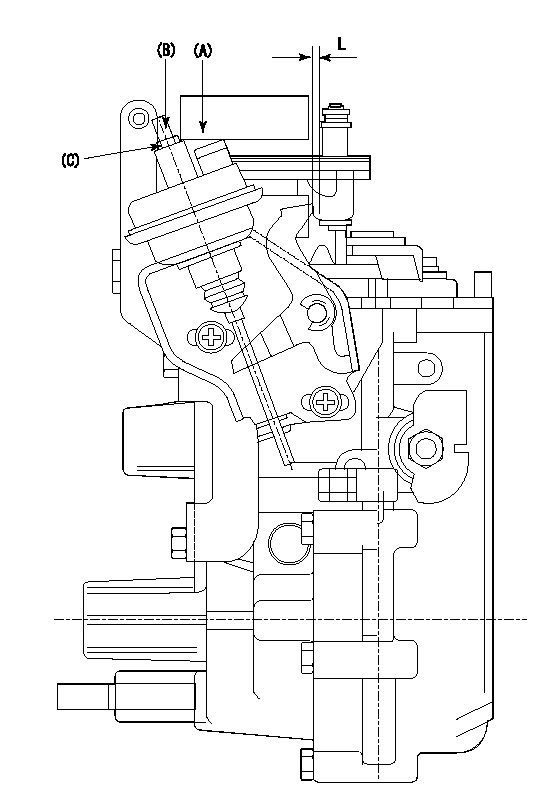
(A) applied negative pressure
(B) Screw
(c) Nut
1. Set the actuator as described below.
(1)Confirm that there is clearance between the actuator lever and the speed lever.
(2)Loosen the nut (C).
(3)Push in the screw (B).
(4)Apply P1 from the actuator (A) part.
(5)Pull out the screw (B) slowly.
(6)Tighten and fix the nut (C) when pump speed is Na and the rack position is Ra.
(7)Torque the nut (C) to T1.
(8)Apply P2 several times.
(9)Confirm that the actuator functions normally.
(10)Confirm that there is a clearance between the actuator lever and the speed lever at that time.
----------
P1=53.3kPa(400mmHg) P2=53.3kPa(400mmHg) Na=440r/min Ra=9.55+-0.1mm T1=1.2~1.6N-m(0.12~0.16kgf-m)
----------
L=(2)mm
----------
P1=53.3kPa(400mmHg) P2=53.3kPa(400mmHg) Na=440r/min Ra=9.55+-0.1mm T1=1.2~1.6N-m(0.12~0.16kgf-m)
----------
L=(2)mm
Timing setting
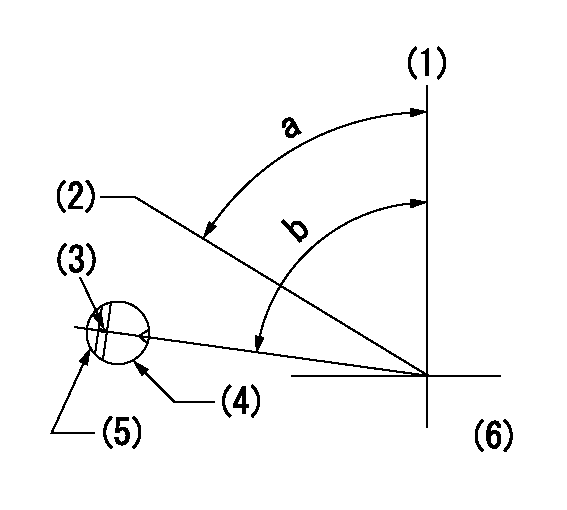
(1)Pump vertical direction
(2)Position of gear's standard threaded hole at No 1 cylinder's beginning of injection
(3)Stamping position on the A/T outer rim
(4)Pump bracket check hole position.
(5)At the No 1 cylinder's beginning of injection, align with the projection seen through the bracket's check hole and mark the A/T's bevel C1.
(6)B.T.D.C.: aa
----------
aa=11deg
----------
a=(60deg) b=(85deg)
----------
aa=11deg
----------
a=(60deg) b=(85deg)
Information:
Total Base Number (TBN) and Fuel Sulfur Levels For Caterpillar DI Diesel Engines
The TBN required in a new oil depends on the sulfur level of the fuel used. For direct injection engines running on distillate diesel fuel, the minimum new oil TBN (by ASTM D2896) should be 10 times the fuel sulfur level, and the minimum TBN is 5 regardless of a low fuel sulfur level- refer to the following graph.
Y = oil TBN shown by ASTM D2896.
X = percent of fuel sulfur by weight.
New oil TBN (1).
Change oil when the used oil TBN limit (2) is reached.In areas where the fuel sulfur exceeds 1.5 percent, choose an oil with the highest TBN that is within the API CF-4 or CG-4 categories, and shorten the oil change interval based on oil analysis. The oil analysis should evaluate oil condition and wear metals. High TBN oils that are not within the API CF-4 or CG-4 categories can produce excessive piston deposits, leading to a loss of oil control and bore polishing.
Operating DI diesel engines with fuel sulfur levels over 1.0 percent may require shortened oil change intervals in order to maintain adequate wear protection.
Lubricant Viscosity Recommendations For Caterpillar DI Engines
The proper SAE viscosity grade oil is determined by the minimum outside temperature at cold engine start-up, and the maximum outside temperature during engine operation. Use the minimum temperature column on the chart to determine the oil viscosity required for starting a "cold soaked" engine. Use the maximum temperature column on the chart to select the viscosity for operation at the highest temperature anticipated. In general, use the highest viscosity oil available that still meets the start-up temperature requirements. Engine Lubricant Recommendations Summary
To achieve all the performance that was built into a Caterpillar engine, follow these guidelines: * Select the proper Caterpillar oil or commercial oil that meets the API specifications* Select the proper oil viscosity based on the applicable Lubricant Viscosities chart* Replace the engine oil and oil filter(s) at the intervals specified in the Operation and Maintenance Manual* Perform maintenance according to the Operation and Maintenance ManualCaterpillar Lubricating Grease
Caterpillar provides grease for a variety of applications and extreme temperature conditions. The descriptions of these products follow.Contact your Caterpillar dealer for part numbers and available container sizes. One grease may be incompatible with another grease. When using commercial grease, make sure the grease is compatible with the grease used in your system, or make sure to purge the system. Contact your supplier regarding grease compatibility questions.Multipurpose Grease
Multipurpose Lithium Complex Grease (MPG)
MPG is a NLGI No.2 general purpose lithium complex grease for light to medium duty applications. MPG has good high temperature characteristics, with a minimum dropping point of 260°C (500°F). MPG contains unleaded extreme pressure additives and antiwear and corrosion inhibitors to provide extra protection in a variety of construction, agricultural and automotive applications.MPG meets the requirements for extended service intervals of automotive chassis points and wheel bearings with disc brakes, particularly in passenger cars, vans, light trucks and
The TBN required in a new oil depends on the sulfur level of the fuel used. For direct injection engines running on distillate diesel fuel, the minimum new oil TBN (by ASTM D2896) should be 10 times the fuel sulfur level, and the minimum TBN is 5 regardless of a low fuel sulfur level- refer to the following graph.
Y = oil TBN shown by ASTM D2896.
X = percent of fuel sulfur by weight.
New oil TBN (1).
Change oil when the used oil TBN limit (2) is reached.In areas where the fuel sulfur exceeds 1.5 percent, choose an oil with the highest TBN that is within the API CF-4 or CG-4 categories, and shorten the oil change interval based on oil analysis. The oil analysis should evaluate oil condition and wear metals. High TBN oils that are not within the API CF-4 or CG-4 categories can produce excessive piston deposits, leading to a loss of oil control and bore polishing.
Operating DI diesel engines with fuel sulfur levels over 1.0 percent may require shortened oil change intervals in order to maintain adequate wear protection.
Lubricant Viscosity Recommendations For Caterpillar DI Engines
The proper SAE viscosity grade oil is determined by the minimum outside temperature at cold engine start-up, and the maximum outside temperature during engine operation. Use the minimum temperature column on the chart to determine the oil viscosity required for starting a "cold soaked" engine. Use the maximum temperature column on the chart to select the viscosity for operation at the highest temperature anticipated. In general, use the highest viscosity oil available that still meets the start-up temperature requirements. Engine Lubricant Recommendations Summary
To achieve all the performance that was built into a Caterpillar engine, follow these guidelines: * Select the proper Caterpillar oil or commercial oil that meets the API specifications* Select the proper oil viscosity based on the applicable Lubricant Viscosities chart* Replace the engine oil and oil filter(s) at the intervals specified in the Operation and Maintenance Manual* Perform maintenance according to the Operation and Maintenance ManualCaterpillar Lubricating Grease
Caterpillar provides grease for a variety of applications and extreme temperature conditions. The descriptions of these products follow.Contact your Caterpillar dealer for part numbers and available container sizes. One grease may be incompatible with another grease. When using commercial grease, make sure the grease is compatible with the grease used in your system, or make sure to purge the system. Contact your supplier regarding grease compatibility questions.Multipurpose Grease
Multipurpose Lithium Complex Grease (MPG)
MPG is a NLGI No.2 general purpose lithium complex grease for light to medium duty applications. MPG has good high temperature characteristics, with a minimum dropping point of 260°C (500°F). MPG contains unleaded extreme pressure additives and antiwear and corrosion inhibitors to provide extra protection in a variety of construction, agricultural and automotive applications.MPG meets the requirements for extended service intervals of automotive chassis points and wheel bearings with disc brakes, particularly in passenger cars, vans, light trucks and
